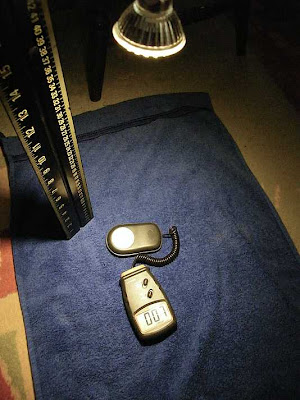A Look at Two LED Bulbs
Both Claiming to be 50 watt Equivalent
Both Claiming to be 50 watt Equivalent
Today I am posting a very simple comparison between two LED lamps both from Irish companies, both claim to be the equivalent of 50 watt tungsten lamps.
Ecopal 2 watt 5mm multi-LED bulb.
The first lamp is a multi LED GU10 from Ecopal Limerick. http://ecopal.ie/led-bulbs.asp The lamp gives a reasonably good account of itself. The bulb is constructed in a standard GU10 glass housing into the front of which is fitted a round piece of circuit board with holes punched for the 5mm LED bulbs. The rest of the bulb looks the same as any GU10 bulb. The lamp colour is very good indeed you could not fault it - slightly on the upper side of warm white, a pleasing colour of light to live with. However, the output on first impression, did not strike me as anywhere near that of a "50 equivalent" as stated on the packaging.
I spoke to a company representative and asked about the useful life of the lamp and the claim that the 2 watt lamp was the equivalent of a 50 watt tungsten bulb. Ecopal will guarantee that the bulb will not lose more than 20% of its light over its quoted life and that it will maintain its colour. As regards output, I did not hear the Ecopal representative actually say that the Lux output matched a 50watt equivalent type of GU10 bulb. What he did say was that the bulb is designed to replace a 50 watt bulb. So I decided to do a few basic tests on output. The Ecopal multi-LED bulb sells for €15.
Vario Lighting VX3 LED bulb.
The second bulb is from Vario Lighting http://www.variolighting.com/. It also claims to replace a 50 watt halogen. The Vario Lighting VX3 is a very high quality piece of engineering, very nice to look at. It is not a standard GU10 or MR16 type of bulb but will fit nicely into most downlighter fittings. It comes with its own little transformer to regulate the current.
The first thing to notice about this bulb is the massive aluminium lathe turned heatsink. The purpose of this heatsink is to take the heat away from the light emitters. It is a build-up of heat that, over time, damages the elements in LED lights. The VX3 bulb has 3 emitters and a lens to focus the light.
The Secret of LED Bulbs is Keeping things COOL
The secret of LED bulbs lies in keeping them cool. When they heat up the LEDs lose their power and change colour over time, keep them cool and they last much longer and maintain the original colour of light. That is why I think, of the two bulbs in discussion, the Vario Lighting bulb is more likely to maintain its output and colour over time.
The VX3 bulbs costs €25 plus a transformer to operate up to six bulbs costs €17. That would make a unit cost of €28.

The Ecopal bulb gave a reading of 7 on the Lux Meter
So I have two LED bulbs each claiming to have a light output equivalent to a 50 watt halogen. So I rig up both lamps and measure the Lux output from a given distance. The readings speak for themselves. Vario Lighting bulb has many times more light output than the Ecopal bulb.
At first I thought that the reading was influenced by the fact that the Vario Lighting bulb has a narrower beam of focus.
 At 50% increased distance to target to compensate for light spread
At 50% increased distance to target to compensate for light spreadThe Vario Bulb still gives a reading of 27!!
I then move the bulb back 50% further from the target and so as to achieve a pool of light of a similar size as the Ecopal bulb. Still the Vario Lighting bulb showed the much higher reading.
The light meter does not lie. The Ecopal bulb output gives a reading of 7. The Vario Lighting bulb gives a reading of 27. That is a big difference to say the least, so it is quite clear that both bulbs cannot be giving the equivalent of a 50 watts tungsten bulb. No competition on light output here, the Vario Lighting bulb wins the game hands down.
.






1 comment:
LED's have a very long life span... I just hope that manufacturers don't build in "Planned Obsolescence", so that they fail prematurely.
Post a Comment